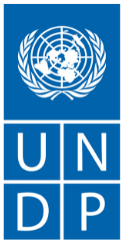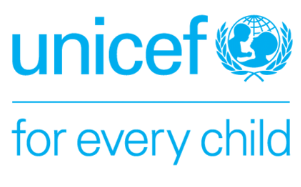2021 has been a year of momentum for INFFs. Over 50 countries kicked off their INFF processes, bringing the total number of countries developing INFFs to more than 70.
In April, the United Nations Development Programme (UNDP), the United Nations Department of Economic and Social Affairs (UN DESA) and the European Union (EU) celebrated the launch of the INFF Knowledge Platform and shared early experiences from INFF implementation on the sidelines of the 2021 Financing for Development Forum.
The first half of the year also saw the publishing of technical guidance for the INFF building blocks, which further defined INFF approaches and explored the different ways the INFF methodology is being applied in pioneer countries.
At the same time, the persistent threat of Covid-19 has underscored the need for developed and developing countries alike to come up with innovative ways to finance recovery plans and align stimulus with longer-term development goals.
The result of this momentum has been a steady growth in international attention and enthusiasm for INFFs. And a lot of activity! To help keep track of INFF progress worldwide, we put out a survey to 71 countries pursuing an INFF.
We did a deep dive into the survey results to distil the most important patterns and lessons. (For the full survey results, check out our Q1 2021 Global progress report or the INFF dashboard.)
A few key takeaways:
- COVID-19 may have initially slowed INFF implementation, but the economic and financial impacts of the pandemic provided a new impetus for implementing INFFs and aligning the development of financing strategies with stimulus plans or revised national development plans.
- Countries are not starting from scratch. Much of an INFF process is about bringing together and strengthening structures and processes that already exist. The survey results show that half of all INFF oversight committees are embedded within existing institutions.
- No two INFFs are the same. Governments are adapting the INFF methodology to reflect their country’s unique context, development trajectory, goals and priorities. The result? INFFs are taking many different shapes.

Briefs 2021 INFF in Q1 2021: Global progress report
The pandemic added new urgency to the call for holistic financing strategies
The disruption caused by the pandemic meant that governments spent much of 2020 focused on crisis response and management. Yet, the wide-ranging economic shocks triggered by the pandemic also highlighted the need for holistic and innovative approaches to public and private financing development and Covid recovery.
Economic activity and commercial investment plummeted in 2020. In many countries, stimulus packages were put in place to hold off economic collapse. But in the medium-term, increases in government spending coupled with declining tax revenue will have a marked impact on public expenditure.
As countries look toward recovery, over 70 governments are using INFFs to shape innovative approaches to financing Covid recovery and medium- to long-term sustainable development. Even amidst the 2020 turbulence, many have taken tangible steps towards developing an INFF – a good indication that INFFs are recognised as valuable tools for overcoming development financing challenges.
INFF oversight committees: Strengthening – not reinventing – the wheel
One of the first steps in developing an INFF is determining who will oversee the process. Some countries will create new governing mechanisms. However, most already have bodies responsible for delivering national development plans or governing public and private financing.
The survey results show that many countries are not reinventing the wheel but rather strengthening what they already have. INFF oversight committees have been formalised or are under negotiation in more than half of the countries that reported to the survey (Figure 1). Of the oversight committees that have been established, half are embedded within existing mechanisms.

Figure 1. More than half of countries have formalised or are formalising INFF oversight committees.
The institutions that house INFF oversight vary widely from country to country. In Timor-Leste, for example, the INFF process is embedded within an ongoing public financial management reform programme. In Tajikistan, oversight has been embedded within the National Development Council under the President’s Office. In Mongolia, oversight is led by the Ministry of Finance, with the support of a multi-stakeholder working group. In Benin, oversight has been taken on by the Resource Mobilisation Committee, chaired by the Ministry of Planning.
No two INFFs are alike: Financing strategies reflect unique country contexts
Many governments use national development plans to chart their country’s development trajectory in the medium- to long-term. Once a country decides which direction they want to go, a significant, and perhaps more difficult, question remains: how?
Unfortunately, most countries do not have a strategy to finance their development plans. A recent study looked at 107 national development plans and found that 79 had no specific costing, and only 29 explained how they would be financed.
Financing strategies bridge this critical gap – and are at the centre of the INFF process. They help countries outline how they are going to mobilise resources to fund their development plans and, more recently, Covid recovery plans.
Through their INFF processes, 31 countries will introduce a financing strategy for the first time, and 27 countries will strengthen existing financing strategies (Figure 2).

Figure 2: More than 30 countries will use INFF processes to articulate an integrated financing strategy for the first time.
Because financing strategies are developed to support the realisation of nationally-driven development plans, Covid recovery plans, SDG action plans or thematic strategies, no financing strategy will take the same form. Each will reflect the unique goals, institutions, challenges and priorities of a country.
In Ghana, for example, the government is creating an INFF from the bottom-up, starting with financing strategies for five district-level development plans. In Bangladesh, the financing strategy focuses on three development priorities: climate finance, renewable energy and water and sanitation. The process brings together a wide range of private companies – more than 60 have participated in consultations to date – to support market analytics and encourage investment. In Tunisia, the INFF is supporting a move from a ‘funding for development’ approach toward a ‘financing for development’ approach focusing on creating new tools to unlock alternative sources of finance.
Future of the survey
Many countries are still in the very early stages of developing their INFF. As countries progress along their INFF journey, we hope to use this survey as an opportunity to collect information, distil lessons and reflect on progress annually. In the long run, more diverse INFF experiences will mean more data and more insights to report on!
As we continue to keep tabs on INFF progress worldwide, we look forward to sharing what we learn along the way. Feel free to reach out to the platform via Twitter at @INFFPlatform or admin@inff.org to share your thoughts, comments or questions on the survey. We look forward to continuing this conversation!




-1625405525.png)












